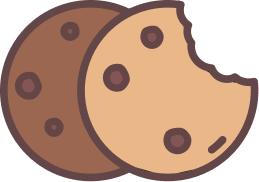#TakeCharge with #Aimshala
How make a career in Weaver
A career as a Weaver offers a unique opportunity to engage in the arts and culture sector, creating textiles that blend tradition with innovation. To embark on this career path, individuals typically need a foundational understanding of textile arts, design principles, and craftsmanship. Pursuing a diploma or degree in textile design, fashion design, or fine arts is essential, along with practical experience gained through apprenticeships or workshops. Mastering various weaving techniques and staying updated with contemporary trends and technologies in textile production are crucial for success. With a combination of education, hands-on experience, and a passion for textile arts, one can build a fulfilling career dedicated to the craft of weaving.
Career in Weaver
What are the roles and responsibilities in Weaver?
- Creating Textiles : Weavers design and create fabrics using various weaving techniques, incorporating color and texture to produce unique textile products.
- Design Development : They develop and refine textile patterns and designs, often collaborating with fashion designers and artists to meet specific project requirements.
- Quality Control : Weavers ensure the quality of their fabrics by conducting inspections and making adjustments to the weaving process as necessary.
- Teaching and Workshops : Many Weavers engage in teaching or conducting workshops to share their knowledge and skills with aspiring artisans and students.
- Market Research : They stay informed about current trends in textile design and production to remain competitive and innovative in their work.
What education is required to study Weaver
Check out the dates of the total number of candidates who have appeared in the CUET 2022 exam from the below table.
Stream |
Graduation |
After Graduation |
After Post Graduation |
|
|
Path 1 |
Completion of high school with a focus on art and design subjects. |
Bachelor's degree in Textile Design or Fine Arts. |
Master's degree in Textile Design or a related field for advanced positions. |
Certifications in specialized weaving techniques or textile arts. |
|
Path 2 |
Completion of high school with emphasis on vocational training in arts and crafts. |
Diploma in Weaving or Textile Arts. |
Advanced diplomas or workshops in specific weaving styles. |
Participation in artisan guilds or professional associations. |

Feeling unsure about
your future?
Let's find the perfect career path for you!
with AI-powered career
guidance

What are the key skills required for Weaver
- Creativity - Essential for designing unique and appealing textiles that stand out in the market.
- Technical Skills - Proficiency with weaving tools and techniques is crucial for producing high-quality fabrics.
- Attention to Detail - A keen eye for detail ensures precision in patterns and quality in finished products.
- Color Theory Knowledge - Understanding color combinations and their impact on design is vital in textile creation.
- Time Management Skills - The ability to manage multiple projects and meet deadlines is key to success in weaving.
What are the career opportunities in Weaver?
- Textile Designer - Textile Designers create patterns and designs for fabrics, often working in fashion or interior design industries.
- Fashion Designer - Fashion Designers use woven fabrics to create clothing and accessories, integrating textiles into their designs.
- Fabric Artist - Fabric Artists explore the artistic potential of textiles, creating unique pieces that often blend weaving with other art forms.
- Textile Manufacturer - Textile Manufacturers oversee the production of woven fabrics, ensuring quality and efficiency in the manufacturing process.
- Artisan Weaver - Artisan Weavers focus on traditional weaving techniques, producing handcrafted textiles for niche markets.
What is the salary and demand for Weaver?
- Salary Overview - The typical salary for Weavers ranges from $30,000 for entry-level positions to over $70,000 for experienced professionals, with variations based on location and specialization.
- Regional Salary Variations - Salaries can vary significantly by region; for example, Weavers in urban areas with a strong fashion industry may earn more than those in rural settings.
- Current Job Market Demand - The demand for skilled Weavers is growing as interest in handmade and sustainable textiles increases.
- Future Demand Projections - Future demand for Weavers is expected to rise as consumers seek unique, artisanal products that emphasize craftsmanship.
Leading companies for careers in Weaver

Woolrich

Pendleton Woolen Mills

Harris Tweed

Eileen Fisher

Natori

Martha Stewart

Annie Selke

Loom and Leaf
What are the best colleges for Weaver in India?
Undergraduate
College |
Location |
Website |
|
National Institute of Fashion Technology |
New Delhi |
https://www.nift.ac.in |
|
Srishti Institute of Art, Design and Technology |
Bengaluru |
https://www.srishti.ac.in |
|
Pearl Academy |
Delhi, Mumbai |
https://www.pearlacademy.com |
|
MIT Institute of Design |
Pune |
https://mitid.edu.in |
|
Delhi College of Art |
New Delhi |
http://www.delhi.gov.in |
Postgraduate
College |
Location |
Website |
|
National Institute of Fashion Technology |
New Delhi |
https://www.nift.ac.in |
|
Srishti Institute of Art, Design and Technology |
Bengaluru |
https://www.srishti.ac.in |
|
National Institute of Design |
Ahmedabad |
https://www.nid.edu |
|
Indian Institute of Crafts and Design |
Jaipur |
http://www.iicd.ac.in |
|
Pearl Academy |
Delhi, Mumbai |
https://www.pearlacademy.com |
What are the best colleges for Weaver in Abroad?
College |
Location |
Website |
|
Rhode Island School of Design |
Providence, Rhode Island, USA |
https://www.risd.edu |
|
Central Saint Martins |
London, United Kingdom |
https://www.arts.ac.uk/colleges/central-saint-martins |
|
Fashion Institute of Technology |
New York, USA |
https://www.fitnyc.edu |
|
University of the Arts London |
London, United Kingdom |
https://www.arts.ac.uk |
|
Royal College of Art |
London, United Kingdom |
https://www.rca.ac.uk |
What are the top entrance exams in India for pursuing a career in Weaver
College |
Tentative Date |
UG/PG |
Important Elements |
Website |
|
National Institute of Fashion Technology |
January |
UG/PG |
Design Aptitude, General Knowledge, and English. |
https://www.nift.ac.in |
|
Srishti Institute of Art, Design and Technology |
April |
Undergraduate |
Creative Thinking, Art and Design. |
https://www.srishti.ac.in |
|
Pearl Academy |
February |
UG/PG |
Design Aptitude, General Knowledge, and English. |
https://www.pearlacademy.com |
|
National Institute of Design |
May |
Postgraduate |
Design Aptitude, General Knowledge, and English. |
https://www.nid.edu |
|
Fashion Institute of Technology |
December |
Postgraduate |
Design Aptitude, Portfolio Review. |
https://www.fitnyc.edu |
Pros & Cons of a Career in Weaver
Pros
- Weavers contribute to the preservation of cultural heritage through traditional textile arts.
- The field offers creative freedom and the opportunity to express artistic vision.
- Professionals in this field can enjoy a fulfilling career that combines art and craftsmanship.
- There is a growing market for handmade and sustainable textiles, enhancing job prospects.
Cons
- The job can be physically demanding, requiring long hours of standing or working with hands.
- Some roles may involve inconsistent income, especially for freelance weavers.
- Market competition can be fierce, making it challenging to establish a successful business.
- The work can sometimes be solitary, particularly for those who work independently.
Did you find this information helpful?


Report
0 out of 0 found this helpful


